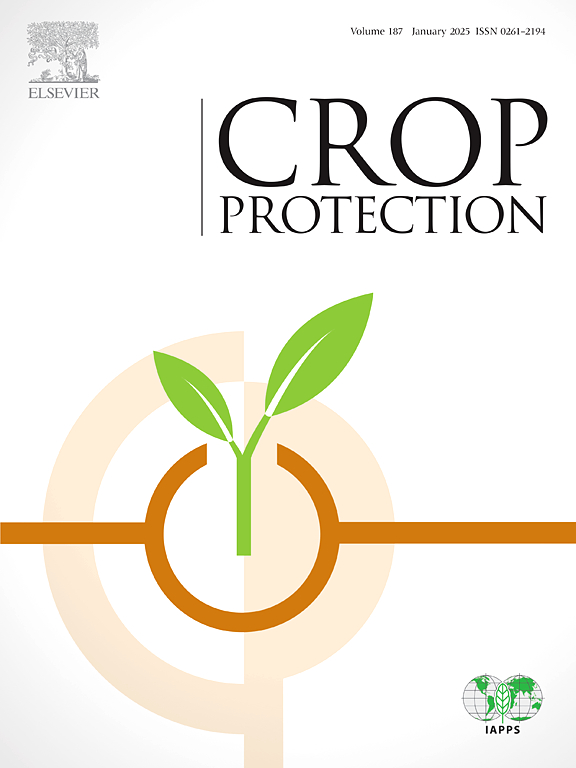温室里的麻雀对辣椒的危害可以通过减少进出来减少
IF 2.5
2区 农林科学
Q1 AGRONOMY
引用次数: 0
摘要
温室是集约化程度最高的农业生产系统之一,也是对害虫影响研究最多的地方,但关于鸟类害虫影响塑料下作物的信息却很少。在全球北部温室最集中的西班牙东南部,为了揭示鸟类与农民之间的潜在冲突,我们对当地农民进行了调查,以获取影响其作物的鸟类种类、最常用的阻止鸟类的方法以及受鸟类影响最大的作物的信息。农民们认为家雀(Passer domesticus)是对他们的作物影响最大的物种,尤其是辣椒。封锁温室和使用(非法的)雾网是最常用的阻止鸟类的方法。我们还评估了鸟类对辣椒(Capsicum annuum, L. cv)的危害。在21个温室中种植作物,并估计了农民的经济损失。在温室内检测到的11种品种中,家雀对辣椒作物造成的危害最大。我们对取样的温室进行了估计,预计由于鸟类的破坏,每年胡椒作物的经济损失为1406.8欧元/公顷。与非法的雾网相比,封闭温室有效地阻止了鸟类进入温室。最后,我们首次揭露了在温室外广泛非法地使用猫来试图减少鸟类数量。这将对生活在温室内和周围的本地野生动物产生负面影响。我们的研究结果强调需要在控制机制上投入更多的资源,以确保鸟类群落的可持续农业实践的发展。本文章由计算机程序翻译,如有差异,请以英文原文为准。
House sparrow damage to peppers in greenhouses can be decreased by reducing access
Greenhouses are one of the most intensified agricultural production systems and where the impact of insect pests has been studied the most, yet there is little information on bird pests affecting crops grown under plastic. To uncover potential conflicts between birds and farmers in southeast Spain, where the highest concentration of greenhouses in Global North is found, we surveyed local farmers to obtain information about the bird species most affecting their crops, the most common methods used to deter them and the crops most impacted by birds. Farmers identified the house sparrow (Passer domesticus) as the species that most affected their crops, especially pepper. Sealing the greenhouse and the use of (illegal) mist nets were the most common methods displayed to deter birds. We also assessed bird damage to pepper (Capsicum annuum, L. cv. Palermo) crops in 21 greenhouses and estimated the economic losses for farmers. Of the eleven species detected inside greenhouses, the house sparrow caused by far the most damage to pepper crops. Our estimates in sampled greenhouses predict economic losses of 1406.8 €/ha per annual pepper crop due to bird damage. Sealing greenhouses effectively prevented birds from entering greenhouses, in contrast to illegal mist netting. Finally, we revealed for the first time the widespread and illegal use of cats outside greenhouses to try to reduce bird populations. This would have negative consequences for the native wildlife living in and around greenhouses. Our findings underscore the need to invest more resources in control mechanisms that ensure the development of sustainable farming practices with bird communities.
求助全文
通过发布文献求助,成功后即可免费获取论文全文。
去求助
来源期刊

Crop Protection
农林科学-农艺学
CiteScore
6.10
自引率
3.60%
发文量
200
审稿时长
29 days
期刊介绍:
The Editors of Crop Protection especially welcome papers describing an interdisciplinary approach showing how different control strategies can be integrated into practical pest management programs, covering high and low input agricultural systems worldwide. Crop Protection particularly emphasizes the practical aspects of control in the field and for protected crops, and includes work which may lead in the near future to more effective control. The journal does not duplicate the many existing excellent biological science journals, which deal mainly with the more fundamental aspects of plant pathology, applied zoology and weed science. Crop Protection covers all practical aspects of pest, disease and weed control, including the following topics:
-Abiotic damage-
Agronomic control methods-
Assessment of pest and disease damage-
Molecular methods for the detection and assessment of pests and diseases-
Biological control-
Biorational pesticides-
Control of animal pests of world crops-
Control of diseases of crop plants caused by microorganisms-
Control of weeds and integrated management-
Economic considerations-
Effects of plant growth regulators-
Environmental benefits of reduced pesticide use-
Environmental effects of pesticides-
Epidemiology of pests and diseases in relation to control-
GM Crops, and genetic engineering applications-
Importance and control of postharvest crop losses-
Integrated control-
Interrelationships and compatibility among different control strategies-
Invasive species as they relate to implications for crop protection-
Pesticide application methods-
Pest management-
Phytobiomes for pest and disease control-
Resistance management-
Sampling and monitoring schemes for diseases, nematodes, pests and weeds.
 求助内容:
求助内容: 应助结果提醒方式:
应助结果提醒方式:


